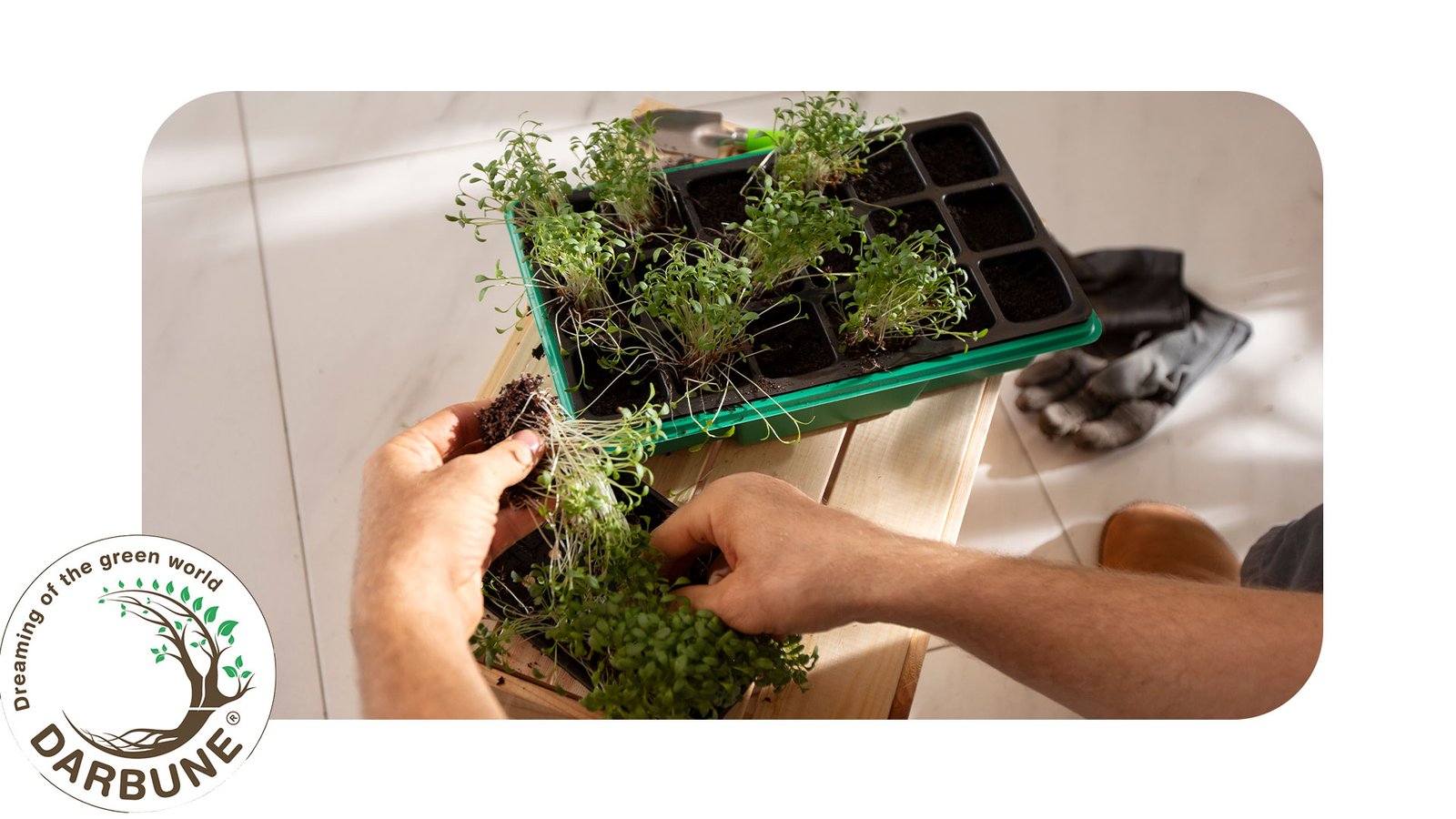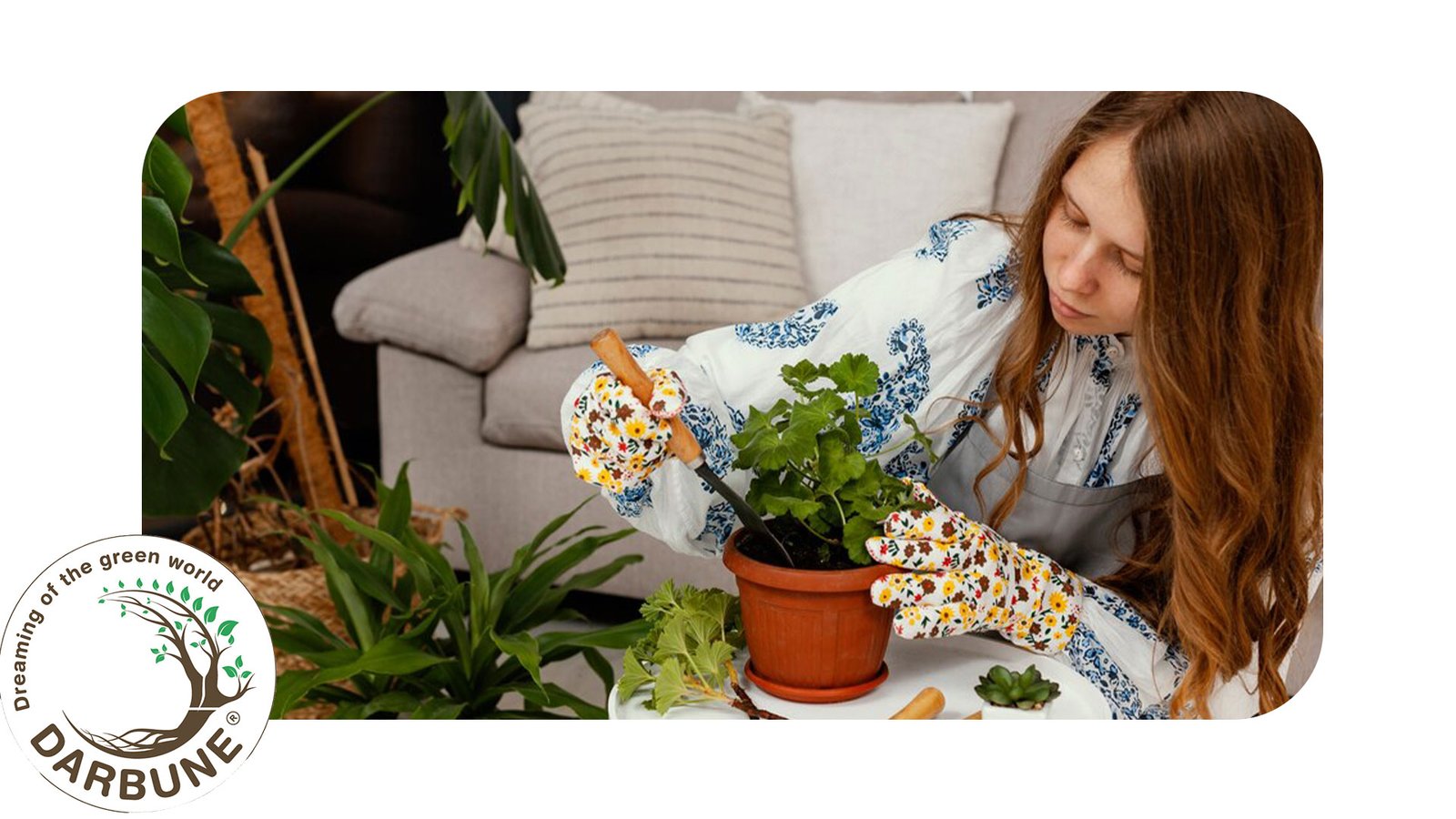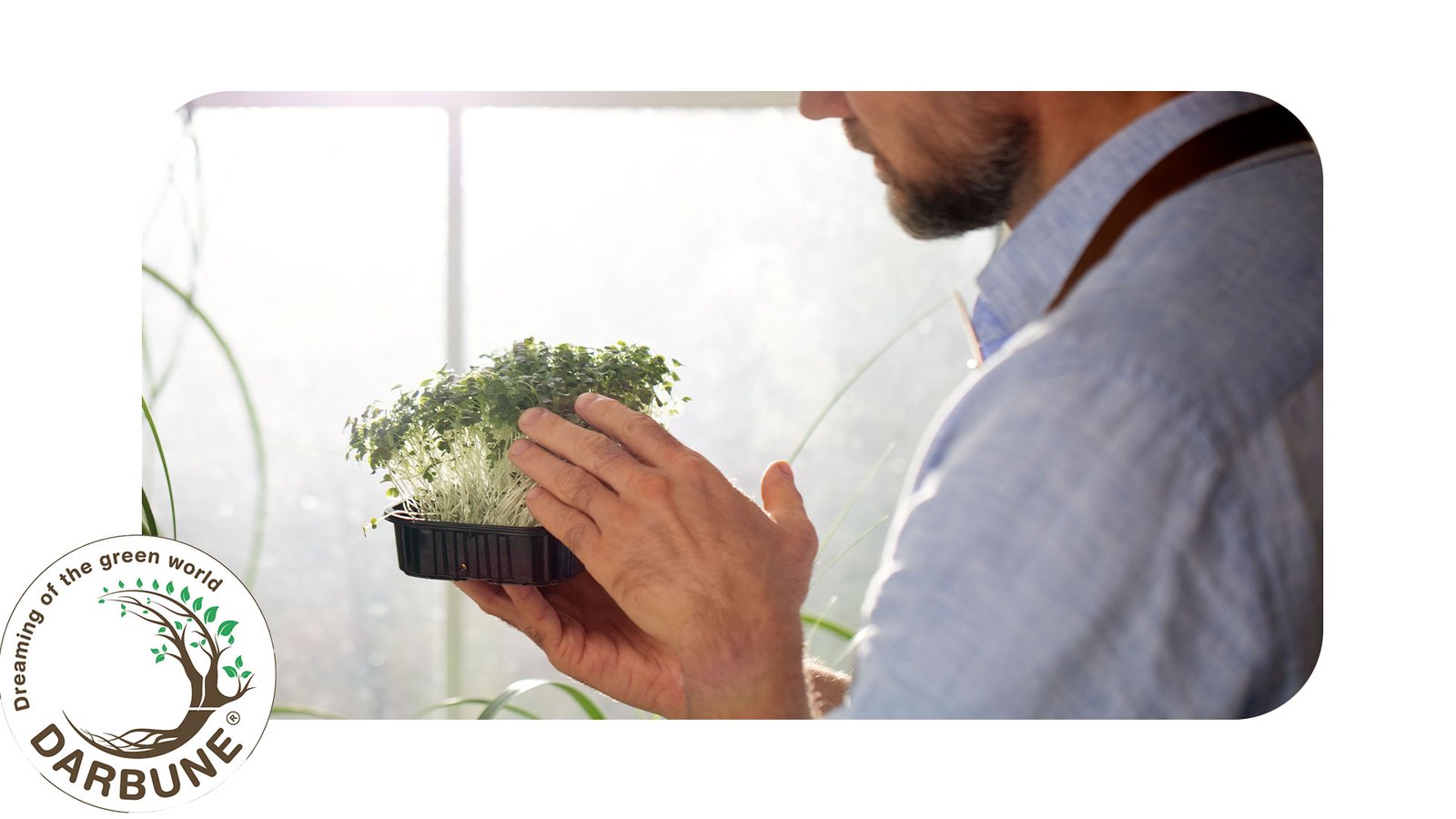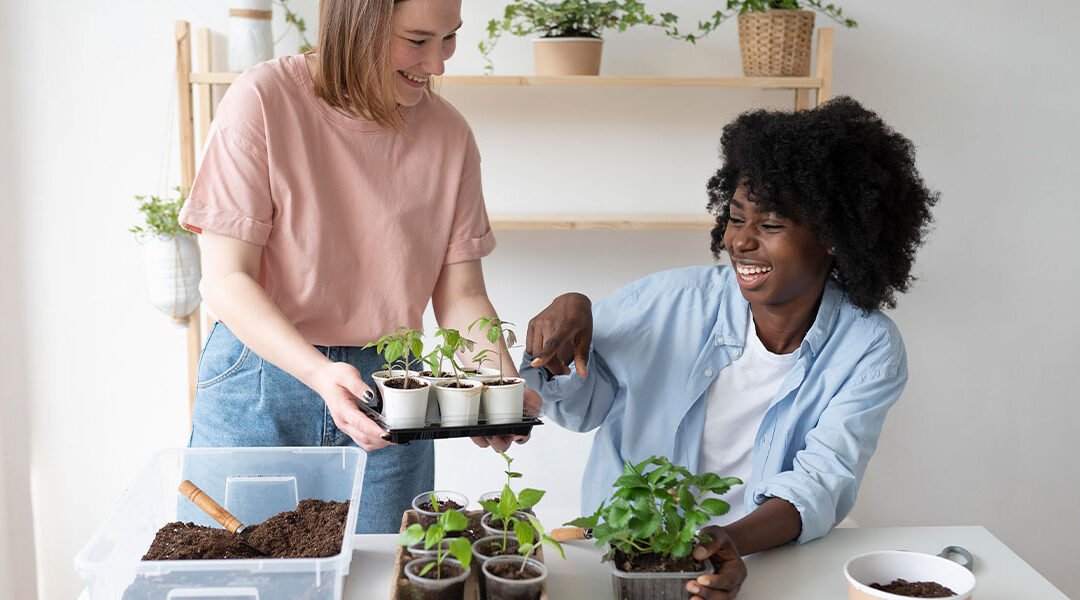Creating a self-sustaining indoor farm is not just a trend but a transformative way to produce fresh, organic produce year-round. As urban living spaces shrink and the need for sustainable practices grows, indoor farming offers a practical solution to reclaim control over your food supply even in limited spaces. This guide will walk you through every step—from planning and design to execution and maintenance—to help you build a thriving indoor ecosystem.
In today’s fast-paced world, the idea to Start a Small Hydroponic Farm has become increasingly appealing. Whether you’re a beginner with a passion for gardening or an experienced urban farmer seeking to innovate, understanding the process behind a self-sustaining indoor farm can be both inspiring and highly practical. As you continue reading, you’ll discover how advanced technologies and creative systems can bring your vision to life while maximizing efficiency and sustainability.

Planning Your Indoor Farm
A well-structured plan is the backbone of any successful project. Before diving into construction and installation, evaluate your space, resources, and objectives. This section covers the critical aspects of planning your self-sustaining indoor farm.
Assessing Space and Resources
Before purchasing equipment or selecting crops, take a close look at your available area. Even the smallest space can be transformed into a thriving indoor farm with careful planning.
-
Measure Your Space:
Create a detailed layout of your area. Consider dimensions, ceiling height, and access to windows or power sources. Use digital tools to sketch your floor plan accurately. -
Identify Resources:
List all available resources such as natural light, water supply, and electrical outlets. This is crucial for establishing an efficient indoor farming setup. -
Budget Considerations:
Determine a budget by listing potential expenses such as equipment, seeds, nutrients, and automation systems. Factor in contingency costs to cover unexpected expenses. -
Regulatory and Safety Checks:
Research local guidelines regarding indoor farming modifications. Ensuring that your setup complies with safety standards is essential for long-term sustainability.
Selecting Suitable Crops and Technologies
The success of your indoor farm depends on choosing the right crops and technologies that align with your environment.
-
Crop Selection:
Choose crops that thrive in confined conditions. Leafy greens, herbs, microgreens, and small fruits are excellent choices. Stagger planting cycles to maintain a continuous harvest. -
Technological Innovations:
Integrate modern systems such as hydroponics, aquaponics, or aeroponics. For those looking to Start a Small Hydroponic Farm, hydroponics offers a soil-less solution that conserves water and space.-
Hydroponics: Cultivates plants in nutrient-rich water.
-
Aquaponics: Merges fish farming with hydroponics where fish waste enriches the water.
-
Aeroponics: Grows plants in air or mist environments for optimal oxygen exposure.
-
Designing the Self-Sustaining System

Once your planning is complete, the next step is to design a system that leverages natural resources, minimizes waste, and can operate independently. This section details the engineering and technological aspects behind a self-sustaining indoor farm.
Energy Sources and Efficiency
Energy management is a cornerstone of successful indoor farming. The goal is to create an environment where energy use is optimized, reducing both costs and environmental impact.
-
LED Lighting:
Energy-efficient LED lights supply the spectrum needed for plant growth while reducing electricity consumption. Position these lights to cover all areas without unnecessary overlap. -
Renewable Energy Integration:
Whenever possible, incorporate renewable energy sources like solar panels. Small solar arrays can supplement your farm’s power needs, especially in sunny climates. -
Energy Monitoring Systems:
Install sensors and smart meters to track energy usage. Data from these devices can help fine-tune lighting and climate control systems for maximum efficiency.
Water Management and Recycling
Effective water management is the foundation of any sustainable indoor farm. Recycling systems conserve water and ensure plants receive a consistent supply of nutrients.
-
Closed-Loop Systems:
Utilize hydroponic and aquaponic systems that recycle water. In hydroponics, water is continuously filtered and reused, while aquaponics benefits from natural fertilizer provided by fish waste. -
Rainwater Harvesting:
If possible, integrate a rainwater harvesting system. Harvested rainwater can be filtered and used to reduce reliance on municipal water supplies. -
Filtration and Purification:
Invest in quality filters and UV sterilization to maintain water purity. Regular maintenance is crucial to avoid blockages and ensure system efficiency.
Lighting and Temperature Control

Creating an ideal microenvironment is essential for healthy plant growth. Effective control of light and temperature can mimic natural conditions, promoting robust development.
-
Lighting Control:
Use timers and smart lighting systems to simulate natural day/night cycles. This not only aids in growth but also improves energy efficiency. -
Temperature Regulation:
Employ thermostats, heaters, and air conditioning units to maintain optimal temperatures. Sensors that monitor humidity levels can prevent mold and support plant health. -
Ventilation:
Good ventilation prevents heat buildup and provides fresh air circulation. Automated systems with CO₂ monitoring can replicate outdoor air conditions to enhance growth. -
Practical Integration:
Combine LED panels with adjustable brightness and smart thermostats. This integrated approach can reduce energy costs and optimize growth conditions.
Setting Up Your Indoor Farm

With your detailed plan and robust design in place, the next phase is to set up your indoor farm. This section breaks down the installation process into clear, manageable steps.
Step-by-Step Installation
Setting up your self-sustaining indoor farm can be approached step by step to ensure a smooth and efficient process:
-
Site Preparation:
-
Clear and clean the designated space to remove dust and potential pests.
-
Confirm that the area is ready for equipment installation.
-
-
Layout Design:
-
Follow your preliminary plan to arrange shelves, racks, and support systems.
-
Ensure proper spacing to promote airflow and ease of maintenance.
-
-
Equipment Installation:
-
Set up LED lighting, water circulation systems, and climate control devices.
-
Install plumbing systems for your chosen hydroponic or aquaponic setup. This is especially important if you plan to Start a Small Hydroponic Farm.
-
-
Technology Integration:
-
Connect sensors, timers, and automation devices to a central monitoring hub.
-
Test each component individually to confirm functionality before integrating fully.
-
-
System Testing:
-
Run the system for several days, monitoring water flow, light cycles, and temperature.
-
Adjust settings based on initial performance data.
-
Integrating Technology and Automation
Automation is key to reducing manual work and increasing consistency in your indoor farming operations.
-
Sensors and IoT Devices:
Install devices that continuously monitor environmental factors such as temperature, humidity, light intensity, and water quality. This data is critical for maintaining an efficient indoor farming system. -
Automated Irrigation and Nutrient Delivery:
Set up systems that regulate water and nutrient delivery based on real-time sensor data. This minimizes waste and ensures plants receive optimal nourishment. -
Control Software:
Leverage software platforms that integrate with your hardware. These solutions often provide remote monitoring and control, ensuring your system runs smoothly even when you’re not on site. -
Real-Life Example:
A successful indoor farm in New York City implemented an automated hydroponic system controlled via a smartphone app, achieving a 25% increase in crop yield over traditional manual systems.
Budgeting and Costs
Understanding the financial aspects is crucial for building a sustainable indoor farm.
-
Initial Investment:
Itemize all startup costs including equipment, installation, and labor. High-quality LED lights, water recycling systems, and smart sensors might require significant upfront investment. -
Operational Costs:
Account for recurring expenses such as energy, water, maintenance, and nutrient supplies. Tracking these costs helps optimize the overall budget. -
Cost-Saving Strategies:
-
Invest in energy-efficient equipment to lower long-term expenses.
-
Consider DIY solutions for non-critical components.
-
Research government grants or local subsidies for sustainable farming initiatives.
-
-
Break-Even Analysis:
Estimate the time required to recoup your investment. With increased crop yields and reduced resource consumption, many systems become profitable within 2-3 years.
Maintaining and Optimizing Your Indoor Farm
A self-sustaining indoor farm demands consistent care and periodic adjustments. This section outlines best practices for maintenance and optimization.
Regular Monitoring and Adjustments
-
Daily Inspections:
Establish a routine to check plant health, sensor readings, and equipment condition. Regular monitoring is vital to preempt issues before they escalate. -
Data Analysis:
Utilize data from sensors to fine-tune environmental conditions. Tracking trends in temperature, water pH, or nutrient levels can help in making timely adjustments. -
Seasonal Adjustments:
Even though your farm is indoors, ambient seasonal changes can affect microclimates. Adjust settings periodically to ensure optimal growth conditions.
Troubleshooting Common Issues
Even the most well-designed systems may face challenges. Here are some common issues and practical solutions:
-
Water Flow Disruptions:
Regularly check your hydroponic lines for clogs. Clean filters and adjust water pressure as needed. -
Lighting Inconsistencies:
Verify that LED panels are functioning properly and that timers are correctly programmed. -
Pest Intrusions:
Despite controlled environments, pests can sometimes appear. Use natural repellents and maintain a clean space. -
Nutrient Imbalances:
Periodically test your nutrient solution and adjust as necessary. Flushing the system occasionally can prevent buildup of salts.
Upgrading for Sustainability
As technology evolves, so should your indoor farm. Upgrading components can improve efficiency and ensure long-term sustainability.
-
System Upgrades:
Regularly invest in newer sensor technologies or more efficient water recycling systems as they become available. -
Scalability:
Design your system with expansion in mind. Modular configurations allow for easy upgrades without a complete overhaul. -
Community Engagement:
Participate in online forums and local groups dedicated to indoor farming. Sharing experiences and learning from others can lead to innovative improvements.
Integrating Cafe Farming Concepts

While the primary focus is on self-sustaining indoor farming, modern urban agriculture is evolving to include concepts such as Cafe Farming. This approach merges traditional indoor farming with public spaces where consumers can enjoy fresh produce on-site.
The Concept of Cafe Farming
-
Definition and Benefits:
Cafe Farming refers to integrating small-scale farming within cafes or community spaces. The Benefits of Cafe Farming include providing ultra-fresh produce, enhancing the dining experience, and promoting local sustainability. -
Implementation:
Owners can incorporate a mini-farm within their cafe to grow herbs, microgreens, or small vegetables. This not only adds a unique selling point but also educates customers about sustainable practices. -
Case Example:
Some urban cafes have successfully adopted Cafe Farming, attracting environmentally conscious patrons while reducing supply chain dependencies. This innovative approach can serve as a model for other indoor farming initiatives.
Leveraging the Best Hydroponic Systems for Growing
For those looking to Start a Small Hydroponic Farm or optimize existing systems, researching the Best Hydroponic Systems for Growing is essential. These systems:
-
Offer tailored nutrient delivery and water recycling.
-
Provide scalability for both home growers and small commercial setups.
-
Are designed to maximize space efficiency and crop yield in limited environments.
Selecting the right system can greatly influence the success of your indoor farm, making it both energy efficient and highly productive.
Case Studies and Examples
Real-life examples provide tangible insights into the potential of a self-sustaining indoor farm in a small space.
Successful Self-Sustaining Indoor Farms
-
Urban Greenhouse in Brooklyn, New York:
A compact indoor farm set up in a renovated warehouse utilized a combination of hydroponics and LED lighting. By integrating the Best Hydroponic Systems for Growing, the farm produced over 300 pounds of organic produce in its first year, while automated nutrient delivery and climate control systems ensured efficient resource usage. -
Apartment Farming in Tokyo, Japan:
In a Tokyo apartment, a self-sustaining system was built in a converted closet using aeroponics and hydroponics. This project, designed to Start a Small Hydroponic Farm, relied on smart sensors to adjust water and light schedules in real-time. The compact system provided a steady supply of herbs and greens, proving that indoor farming can flourish even in very limited spaces. -
Rooftop Indoor Farm in London, UK:
A small-scale indoor farm on a rooftop integrated renewable energy sources, including solar panels and wind turbines. Emphasizing waste recycling and resource optimization, this farm maintained a near-closed-loop system. Its success demonstrated that sustainable practices such as indoor farming and innovative setups like Cafe Farming can significantly reduce a farm’s carbon footprint.
Conclusion
Building a self-sustaining indoor farm in a small space is both challenging and immensely rewarding. With careful planning, the integration of advanced systems, and regular maintenance, your indoor farm can provide a consistent supply of fresh produce while minimizing environmental impact. The process—from designing energy- and water-efficient systems to incorporating automation and even embracing innovative concepts like Cafe Farming—ensures a dynamic, eco-friendly approach to urban agriculture.
In summary, the key steps include:
-
Assessing your space and resources.
-
Designing a system with energy, water, and climate control at its core.
-
Executing a detailed installation and automation plan.
-
Regular maintenance and upgrades to ensure long-term success.
By embracing the strategies outlined in this guide, you can create a model indoor farm that not only supports a sustainable lifestyle but also inspires innovation in modern urban agriculture.
Frequently Asked Questions (FAQ)
1. What is indoor farming?
Indoor farming refers to growing crops in controlled environments such as indoors, using technologies like hydroponics, aquaponics, or aeroponics. This method allows year-round production in limited spaces.
2. How do I Start a Small Hydroponic Farm in my home?
To Start a Small Hydroponic Farm, begin by evaluating your space, selecting suitable crops, and investing in the right hydroponic system. Ensure you set up proper lighting, water recycling, and automation systems to support plant growth.
3. What are the Benefits of Cafe Farming?
Cafe Farming combines small-scale agriculture with public spaces, offering ultra-fresh produce to customers and reducing supply chain costs. The Benefits of Cafe Farming include increased customer engagement, reduced environmental impact, and enhanced community sustainability.
4. What are the Best Hydroponic Systems for Growing in a small space?
The Best Hydroponic Systems for Growing are those that maximize space efficiency, offer automated nutrient and water management, and can be scaled to suit your available area. Research different models based on your specific needs before making a selection.
5. How can indoor farming contribute to a sustainable lifestyle?
By using controlled environments, indoor farming minimizes water usage and waste, while modern systems can integrate renewable energy sources. This approach significantly reduces environmental impact and supports year-round production.

